Happy birthday! Read about the legendary violinist and pedagogue that influenced string players worldwide
The renowned violin pedagogue Otakar Ševčík was born on 22 March 1852 in Horažďovice, Bohemia. He made a huge impact on string playing and teaching in the 18th and 19th centuries, with players travelling from around the world to study with the legendary pedagogue. Here are a selection of excerpts from The Strad archives that illustrate his profound influence.
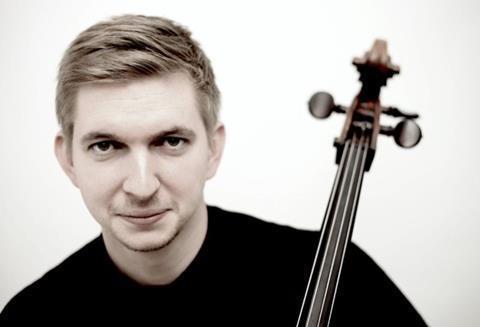
’Ševčík’s studies are like instrument yoga’ - cellist Tomáš Jamník
Musicians nowadays have to work fast: we have so many projects to complete, and so much repertoire to play, that sometimes we hardly have time to practise. For that reason, it’s more important than ever that we analyse and plan how to overcome the technical difficulties in our repertoire.
Most problems can be broken down into a limited number of separate challenges for the left and right hands. This is something that Czech violin pedagogue Otakar Ševčík (1852–1934) understood very well. His etudes and analytical studies isolate left- and right-hand techniques that can be used to overcome almost any technical trouble that we encounter.
Ševčík’s approach is particularly appropriate for working on pieces by composers such as Martinů and Dvořák, who are near-contemporaries and have similar approaches to phrasing and articulation. All were Czech, and Ševčík even worked under Dvořák’s direction, as head of strings at the Prague Conservatoire. Ševčík’s approach will also allow you to tackle difficult passages in just about any piece in the repertoire, by helping you to create your own targeted practice variations.
Ševčík’s studies are like instrument yoga: they teach you to feel and understand your body and instrument, and to analyse every sound and movement when you play. They are autodidactic and once you have learnt to use them, you will be able to approach new technical difficulties in any piece, in a way that will enhance your understanding of the whole instrument.

’Ševčík helped to launch the international careers of female soloists at a time when the violin was gradually becoming a socially acceptable instrument for women to play’
‘Young women do not drink or smoke to excess; they therefore tend to be in better physical condition. It is also evident that they are more patient than men.’ So said Otakar Ševčík (1852–1934) of his female students, supposedly in an interview for Pall Mall Magazine in 1910, reproduced in The Amadeus Book of the Violin (1998).
As one of the most famous violin teachers in Europe at the start of the 20th century, Ševčík helped to launch the international careers of female soloists at a time when the violin was gradually becoming a socially acceptable instrument for women to play. Yet these women and their stories have so far received little attention from writers, in comparison with their male contemporaries.
Henry Roth’s enduring book Master Violinists in Performance (1982) offers a case in point. Following eight individual chapters on famous male violinists like Heifetz and Menuhin, Roth ends the book with a single chapter titled ‘Women and the Violin’, which only briefly covers some of the better-known female violinists, the bulk of the material consisting of photographs rather than biographical detail.
‘Ševčík helped me with my double-stops’
Those who did study Ševčík will think of him with gratitude. ‘Ševčík helped me with my double-stops’ Itzhak Perlman remembers, though he does not use Ševčík in his own practice any more. Rodney Slatford used a ‘private arrangement’ of Ševčík when he was a student, finding the exercises for articulation and bow development particularly helpful, though likewise he does not use them now.
Violist Kim Kashkashian, however, still uses excerpts from the School of Bowing Technique Book 1 to improve her own technique, as well as various chord and position studies, while Bruno Giuranna, also on viola, uses left-hand and position-changing exercises which ‘directly originate from Ševčík’. ‘I enjoy demonstrating op.2 exercises to students; it feels like practising,’ he adds.

’His method of teaching included the writing of short studies called ”purpose exercises”’
Nearly 50 years after the appearance of his op.1, Ševčík’s pioneering spirit took him in a new direction: writing repertoire-specific exercises.
The new repertoire-specific exercises expanded upon an idea that Ševčík had first explored with his op.5. He believed that a student’s ability to analyse and learn in a systematic way needed to be rigorously reinforced to improve practice efficiency. His method of teaching included the writing of short studies called ‘purpose exercises’, each of which addressed a specific technical skill. Ševčík analysed a concerto or a virtuoso showpiece and isolated its inherent technical problems in order to focus on one issue at a time. Gradually, the student would put the pieces of the puzzle together and be able to give a successful performance of the difficult work in its entirety.
At the end of the 1920s, Ševčík expanded these ‘purpose exercises’ into printed form, starting with his op.16, which covers 45 works of various lengths. Wieniawski’s Scherzo-Tarantella, Bazzini’s Dance of the Goblins and Paganini’s Witches Dance and Moses Fantasy are a few of the compositions analysed in op.16. The next several volumes, opp.17–21 and op.25, are devoted to the complete violin concertos of Wieniawski, Brahms, Tchaikovsky and Mendelssohn, as well as the first movement of Paganini’s D major Concerto and the Joachim cadenza to the Brahms Concerto.
’It’s a great way for a player to practise most of the major bow strokes in a short period of time’ - Patricia Pollett, viola professor, University of Queensland
Although I encourage dipping into sections of the complete Ševčík output, I find that concentrating on only a few of them can be comprehensive. Op.2 no.5 is a good example. It’s a great way for a player to practise most of the major bow strokes in a short period of time. I reduce the length of the theme to the last line only, which still uses all four strings, so that it can be done even more quickly. The study begins with basic détaché strokes, and gradually goes through various legato, staccato, portato, spiccato, accents, dotted rhythms, syncopated legato notes, Viotti bowing, jeté, sautillé, repeated down and up bows and even some dynamics.
It is a complete workout for the bow. The first 40 variations of this study are also particularly useful in developing or maintaining a straight bow. Using defined sections of the bow – the upper half with the forearm and the lower half with the upper arm – allows students to isolate and observe the exact movements required. Then, creating a whole bow is a matter of connecting the two and adding little movements in the arm to ensure a straight bow. They also help ensure that sound quality and consistency are the same in all parts of the bow.
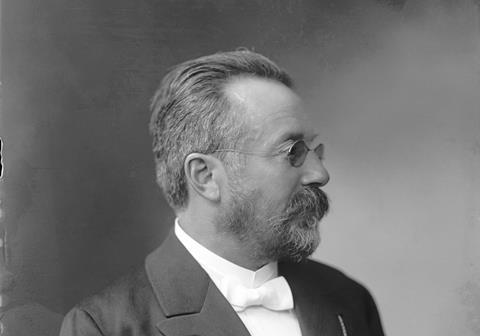
’The study of the violin is long and arduous’ - Professor Ševčík addresses Strad readers in 1912
You ask me to send a message to the readers of The Strad. Well, I hardly know what to say. I have read the little paper with interest for a long time, and feel as though I had many friends amongst Strad-ites. I should like first to say how much I have been impressed by the welcome given me on my first visit to London. I have long wished to see the country which has sent me so many talented and charming pupils, and really I have been deeply touched by the exceedingly kind way I have been received here, and I shall never forget such a memorable experience.
As to advice to violin students I feel rather at a loss as to what to say. The study of the violin is long and arduous, and should only be undertaken by those who have a strong and undoubted talent for it, as well as the necessary physical strength to work. For the rest I would say, practise regularly, however long or short a time you may be able to devote to it, and remember that the foundation of all good work is to practise slowly. Quick practice leads to hurried and careless performances.
The number one source for playing and teaching books, guides, CDs, calendars and back issues of the magazine.
In The Best of Technique you’ll discover the top playing tips of the world’s leading string players and teachers. It’s packed full of exercises for students, plus examples from the standard repertoire to show you how to integrate the technique into your playing.
The Strad’s Masterclass series brings together the finest string players with some of the greatest string works ever written. Always one of our most popular sections, Masterclass has been an invaluable aid to aspiring soloists, chamber musicians and string teachers since the 1990s.
American collector David L. Fulton amassed one of the 20th century’s finest collections of stringed instruments. This year’s calendar pays tribute to some of these priceless treasures, including Yehudi Menuhin’s celebrated ‘Lord Wilton’ Guarneri, the Carlo Bergonzi once played by Fritz Kreisler, and four instruments by Antonio Stradivari.
Topics
Born on this day: Violinist Otakar Ševčík

Happy birthday! Read about the legendary violinist and pedagogue that influenced string players worldwide
 Currently
reading
Currently
reading
Born on this day: Violinist Otakar Ševčík
- 2
- 3
- 4
- 5
- 6


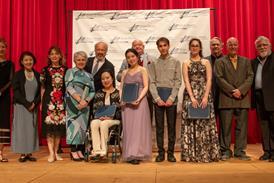
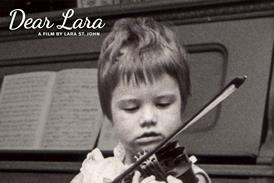
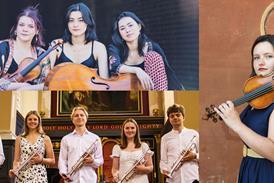









































![[1] Soyoung Yoon pc Julia Wesel](https://dnan0fzjxntrj.cloudfront.net/Pictures/100x67/6/6/1/33661_1soyoungyoonpcjuliawesel_954281.jpg)









No comments yet